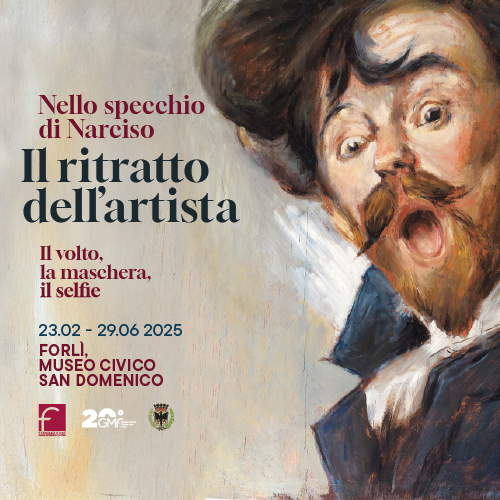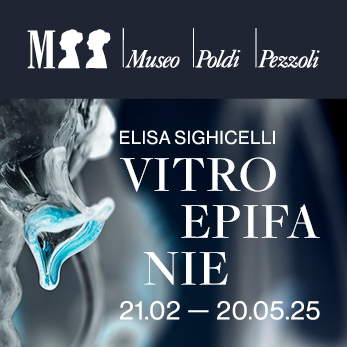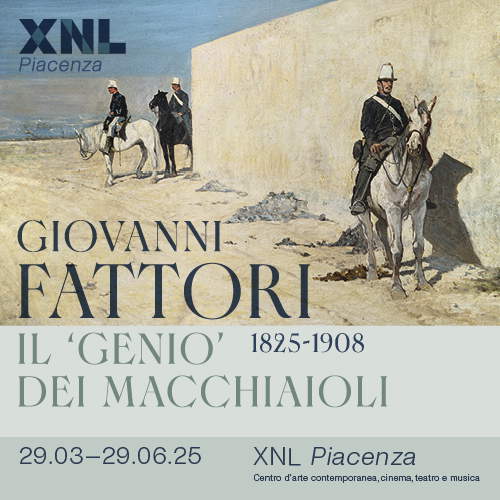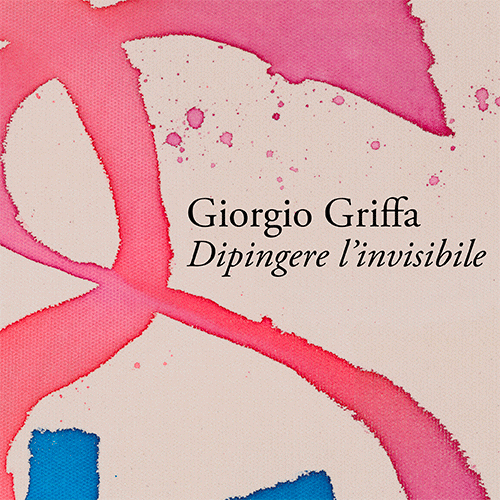Miart 2025, the 15 most representative works of the fair (with prices)
From April 4-6, 2025, Milan returns to the center stage ofcontemporary art with the 29th edition of miart, the international fair that brings together artists, gallery owners, collectors and enthusiasts from around the world. Hosted atAllianz MiCo, the event is confirmed as one of the most important events in the sector, with the participation of 179 galleries from 31 countries and five continents. This year’s edition is distinguished by a thread on the theme Among Friends, inspired by the 100th anniversary of the birth of Robert Rauschenberg, famous for his artistic vision focused on collaboration and dialogue between different disciplines and cultures.
The fair, directed again this year by Nicola Ricciardi, is divided into three main sections: Established, dedicated to the great names of the 20th century and established contemporary artists; Emergent, which shines a spotlight on younger galleries and emerging voices on the international scene; and Portal, an experimental section that explores innovative projects capable of transcending geographical and disciplinary boundaries.
Identifying the most representative works of miart is not an easy task, but we have selected for you 15 works to look at carefully that we feel embody the spirit and most interesting trends of this edition. A privileged window on the directions of contemporary art. In keeping with the tradition of Finestre Sull’Arte, works published with prices.
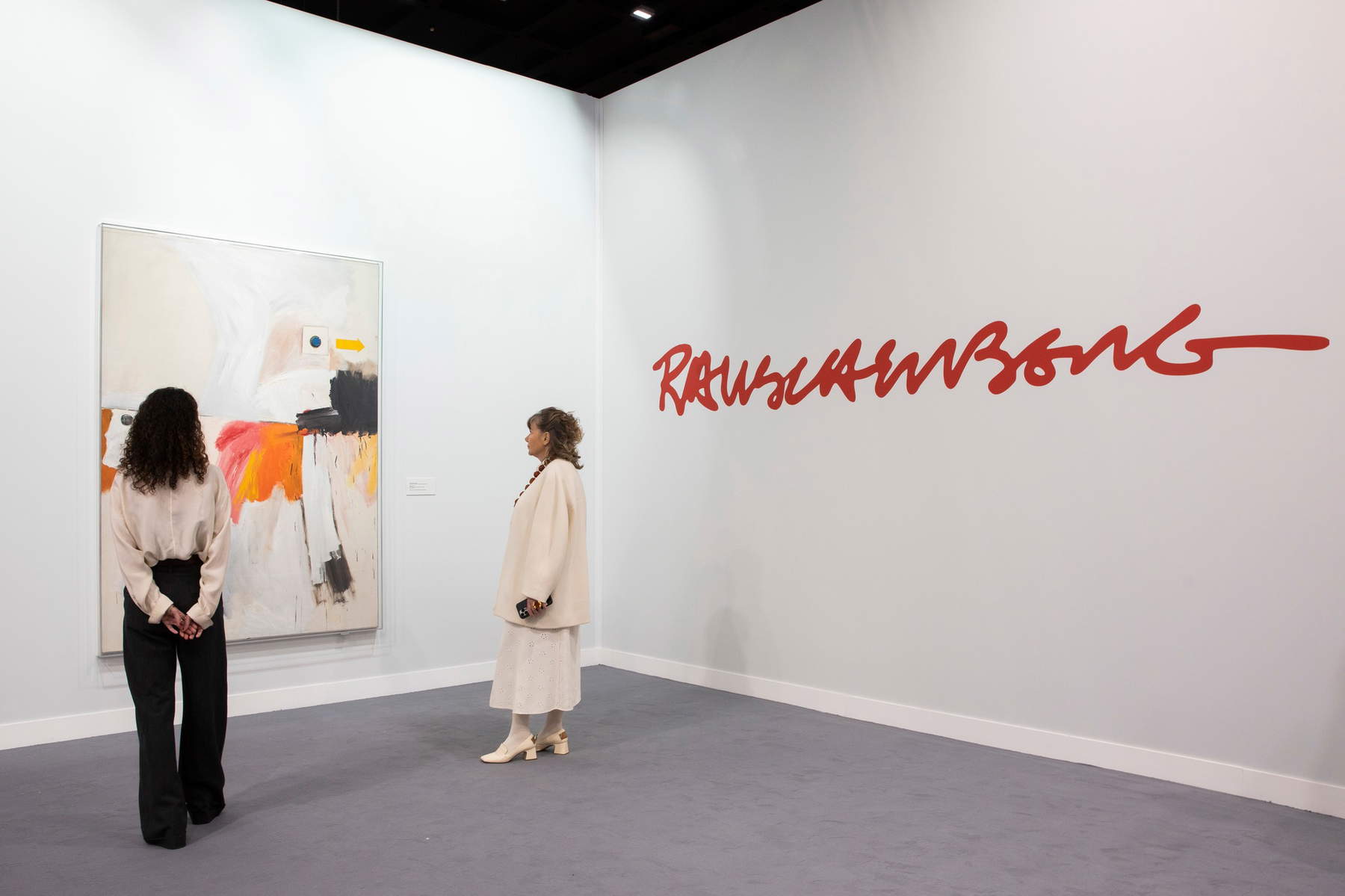
1. Julian Schnabel, White Dog + Little Dog. Proposed by: Enzo Sperone. Price: 300,000 euros.
The two works by Julian Schnabel (New York, 1951) that Enzo Sperone brings to miart (the other is Untitled - Chinese Painting, exhibited next to this one) take up an entire wall by themselves and are among the most expensive works to be found at the fair (both cost 300,000 euros, despite the difference in size: the Chinese Painting, from 2005, is in fact a work three and a half meters high). They are part of a series, the “Tarp Paintings,” that the artist has been carrying on since the 1970s: it is one of the main strands of research of the great director-painter who creates these monumental works on found tarpaulins, which come to life again with marks, stains, paintings, insertions of additional objects. Julian Schnabel’s art is expressive, textural and monumental, and his Tarp Paintings are a clear example of this. The American artist is distinguished by his use of unconventional materials, such as crushed ceramics, industrialtarps (tarp), velvets and recycled surfaces, which transform the medium itself into an integral part of the work. Schnabel is an artist who challenges pictorial conventions, combining figurative and abstract elements in a gestural and impulsive style, close to abstract expressionism and neo-expressionism. His works often convey a sense of grandeur and decadence, evoking emotions through unusual materials, energetic brushstrokes and a bold use of color.
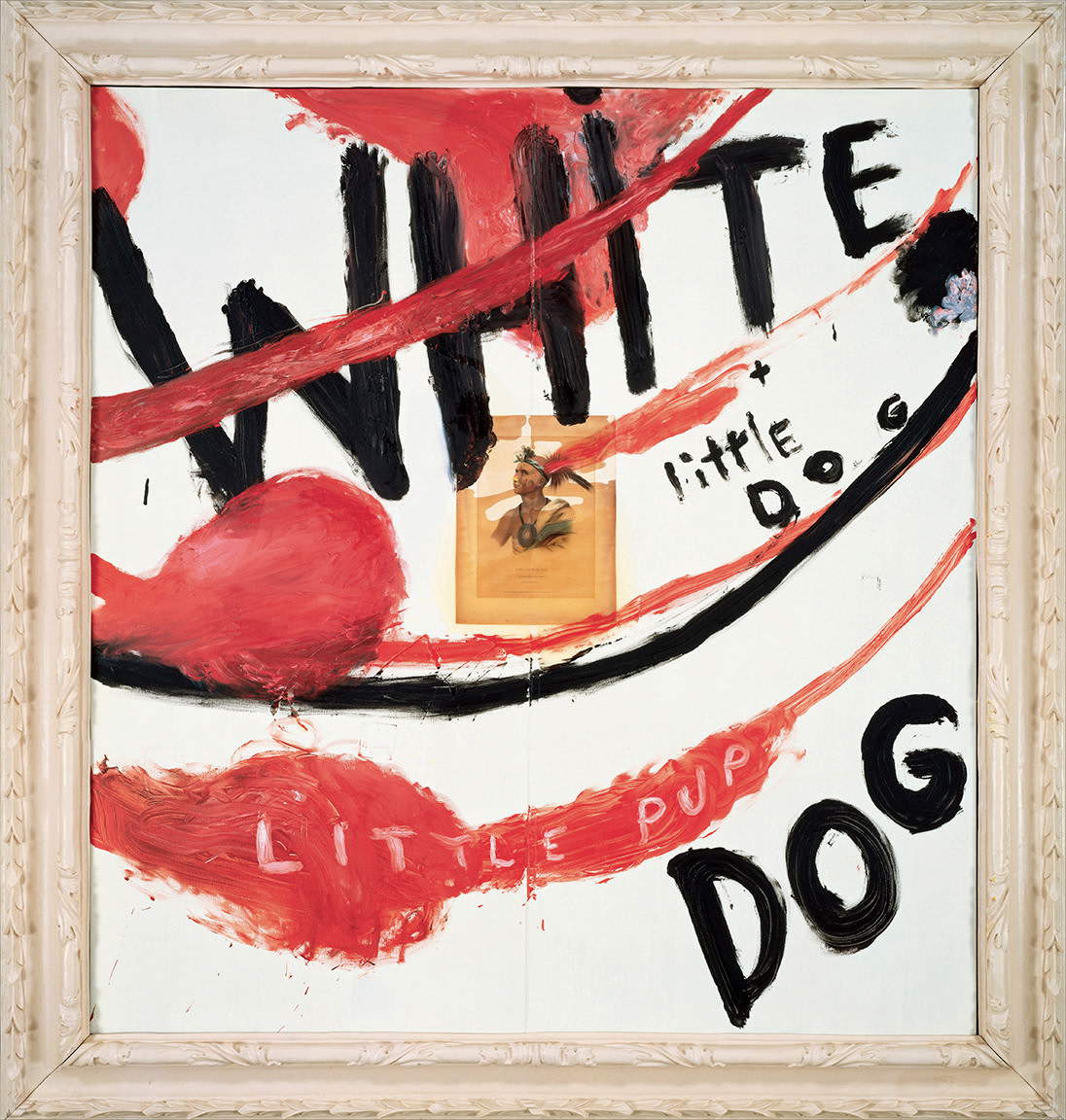
2. Max Ernst, La ville entière. Proposed by: Umberto Verolino. Price: 280,000 euros.
The Whole City(La ville entière) is a work by Max Ernst (Brühl, 1891 - Paris, 1976) belonging to a series of 12 paintings made between 1933 and 1937, characterized by a surrealist landscape reflecting the artist’s growing pessimism due to the political situation in Germany in those years. The original work chosen as a model for a tapestry, the one presented at miart by Umberto Verolino, is now preserved at the Peggy Guggenheim Collection in Venice, one of the most important museums of 20th-century European and American art in Italy. The tapestry in question was hand-woven by Yvette Cauquil-Prince (1928-2005), a renowned Belgian weaver who founded her atelier in Paris in the 1950s and later moved to Corsica. She was famous for her collaborations with important 20th-century artists, particularly Marc Chagall, with whom she made 40 tapestries. Verolino’s large tapestry was also exhibited at the 2018 edition of Arte Fiera in Bologna.
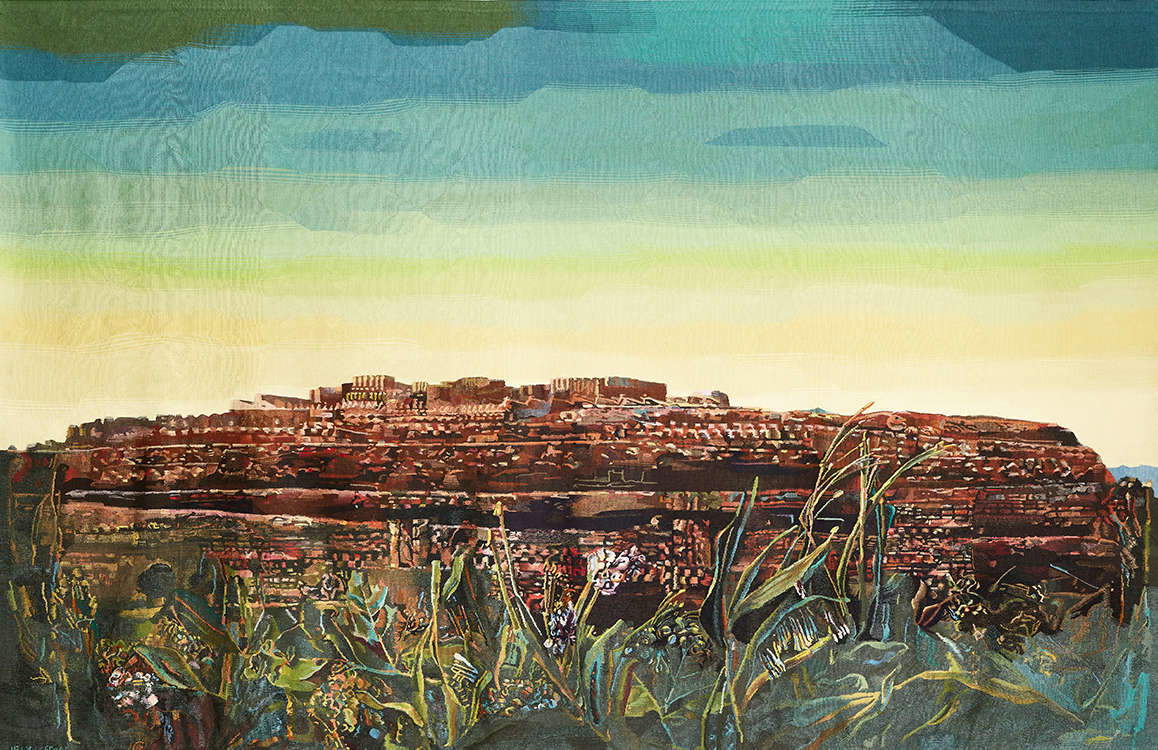
3. Karel Appel, Flamme Riante. Proposed by: Matteo Lampertico Fine Art. Price: 260,000 euros
Karel Appel (Amsterdam, 1921 - Zurich, 2006) is one of the great names in 20th-century art. A Dutch painter, sculptor and poet, known as one of the founders of the CoBrA art movement, he distinguished himself with art that made bold use of color and employed energetic brushstrokes and expressive, sometimes grotesque forms. His works often depicted human and animal figures in an abstract and playful manner, and reflected an interest in spontaneous and unconventional art. The work Flamme riante presented at miart by Matteo Lampertico exemplifies one of the best moments in Appel’s career.
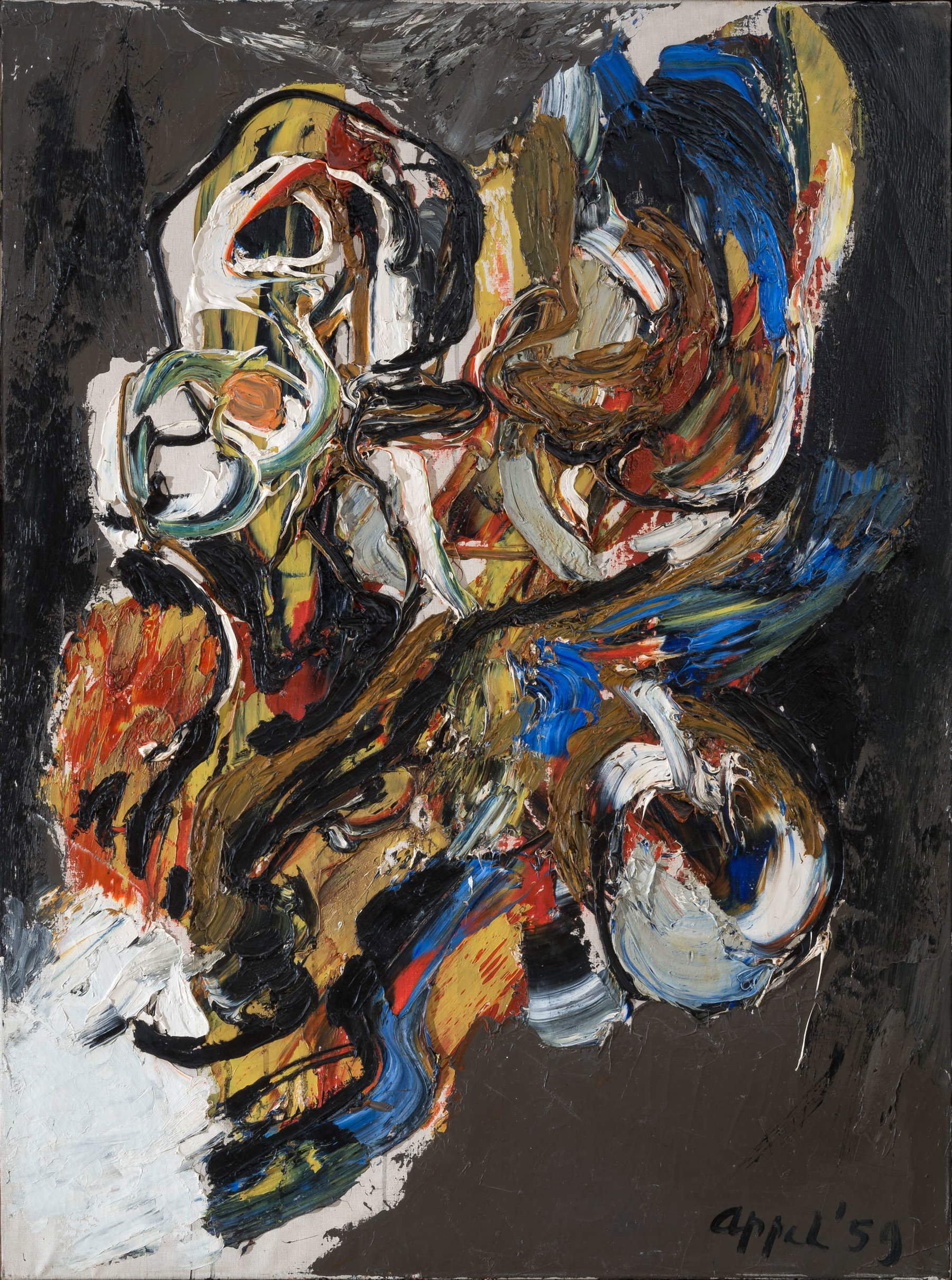
4. Mario Schifano, Night view with figures. Offered by: Artemisia Fine Art. Price: 150,000 euros
Works by Mario Schifano (Homs, 1934 - Rome, 1998) are a rather regular presence at art fairs, since Schifano is still one of the most sought-after artists on the market. However, seeing one of his monumental paintings, such as this two-by-three-meter Night Viewed with Figures, is always pleasing: it is one of the largest works in this edition of miart.
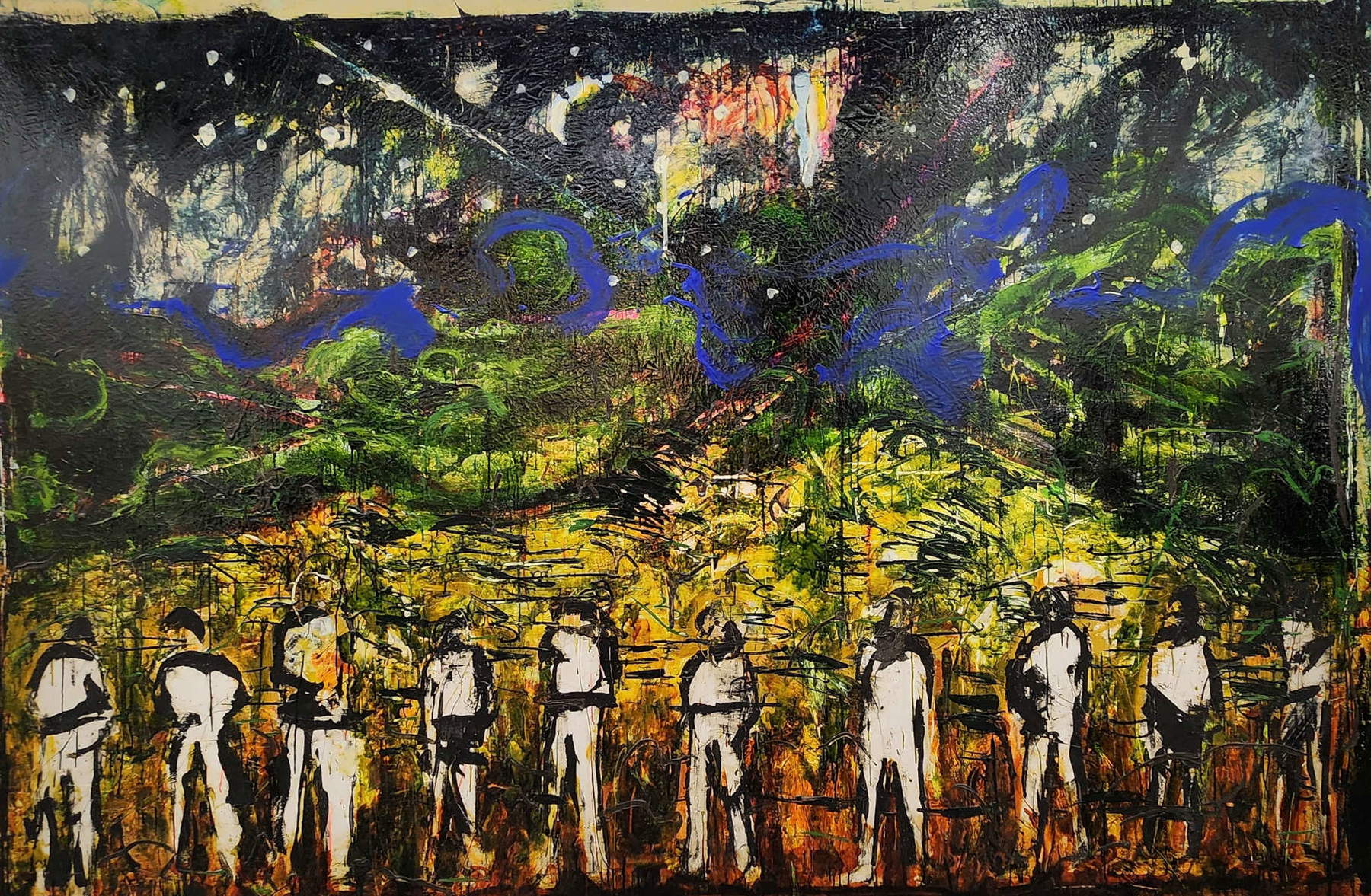
5. Alex Katz, Yvonne and Carmen. Proposed by: Monica de Cardenas. Price: 85,000 euros.
An interesting novelty for Italian fairs. Monica de Cardenas brings to miart two large cartoons by Alex Katz (New York, 1927): the other, smaller in size, is priced at 62,000 euros. Known to be one of the leading masters of American Contemporary Realism, Katz is famous for his large-scale depictions of landscapes, flowers and portraits, which are distinguished by the flattening of forms and details. He often relied on the support of dusting boards for his canvases, such as those presented by Monica de Cardenas, an ancient technique: they were also the focus of an exhibition that the Milan gallery offered to the public between November 2024 and February 2025. This was the first time the Italian public was able to see the cartoons of the American artist.
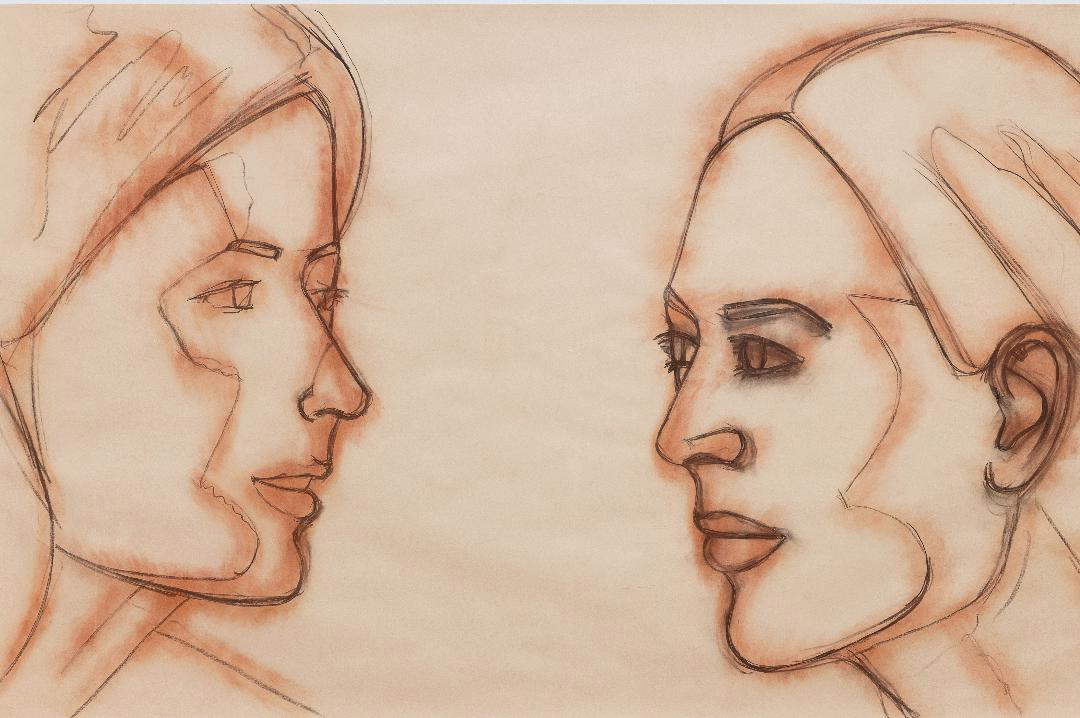
6. Atanasio Soldati, Composition. Proposed by: Cardelli and Fontana. Price: 50,000 euros.
Atanasio Soldati (Parma, 1896 - 1953) is considered one of the pioneers of Italian abstractionism, with works characterized by geometric forms, vivid colors and a metaphysical lyricism. Born in Parma in 1896, he graduated in architecture in 1920 and moved to Milan in 1925. From 1931 he came into contact with abstractionist artists and began exhibiting at Il Milione gallery, confronting the cubism of Léger and Picasso and being influenced by Klee, Kandinsky and Mondrian. After a neo-metaphysical phase, he developed an autonomous style close to Osvaldo Licini and Fausto Melotti after the war. He exhibited at the Rome Quadriennale (1936) and the Venice Biennales (1948, 1950, 1952). The work presented by Cardelli and Fontana is one of the most crystalline examples of Soldati’s poetics, particularly his meditation on the works of Mondrian.
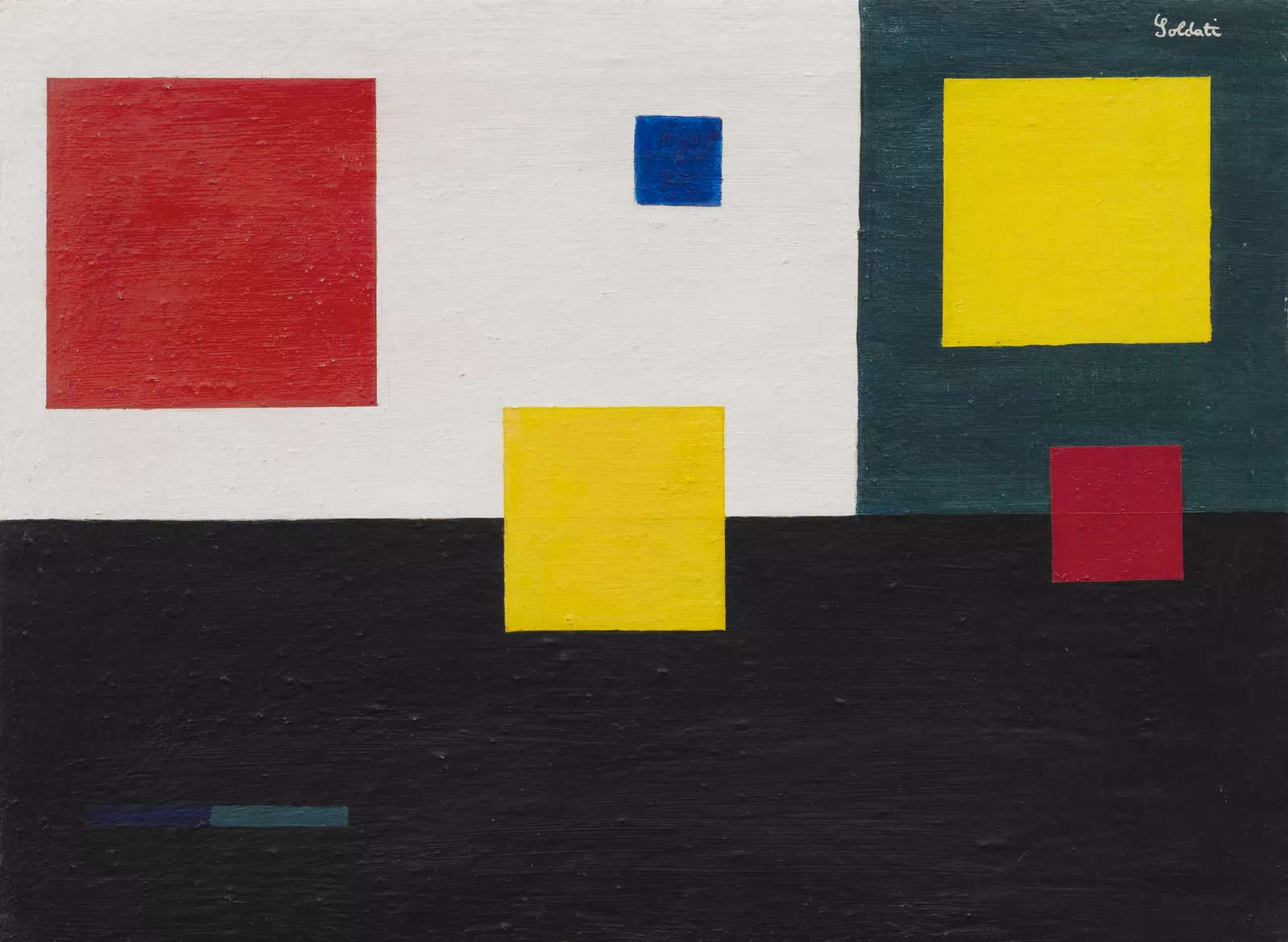
7. Greta Schödl, Assemic Gold. Proposed by: Richard Saltoun. Price: 20-30,000 euros.
Fresh from the Venice Biennale, in which she participated in 2024, Austrian Greta Schödl (Hollabrunn, 1929) is a visual poet who creates paintings that imitate writing to capture its progression, rhythm, and variations. On backgrounds made with pure pigments, Schödl used to affix her particular writing by application of gold leaf. It is a writing where there are no distinguishable words: meaning is thus simultaneously erased and rewritten, to symbolize that language at bottom is but a social construct that can be variously rendered or interpreted.
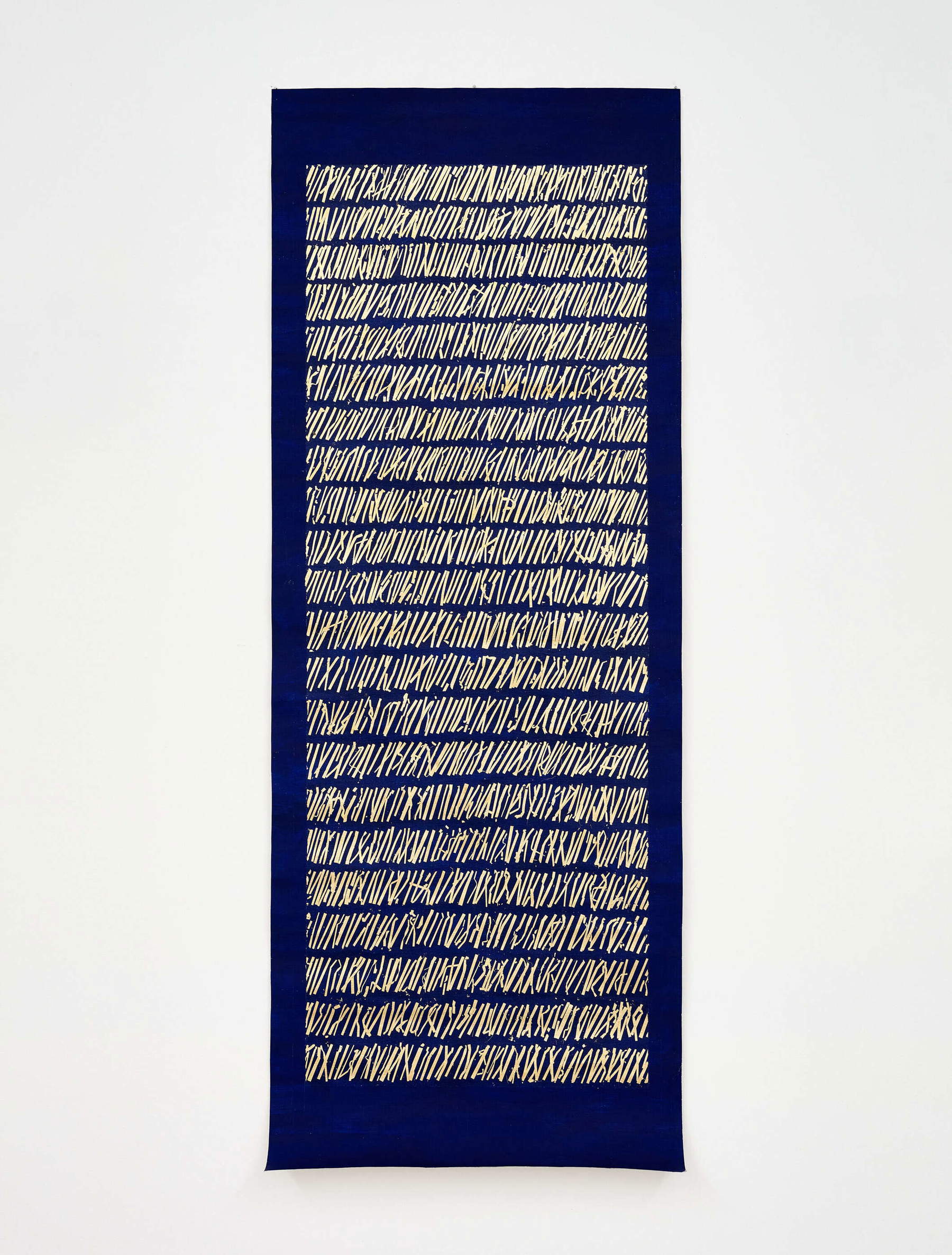
8. Emanuele Cavalli, Figure with Maria Letizia. Proposed by: Carlo Virgilio & C. Price: 26,000 euros.
A central figure in the events of the Roman School, Emanuele Cavalli (Lucera, 1904 - Florence, 1981) focused his research on the study of color from the very beginning. Author, together with Giuseppe Capogrossi and Roberto Melli, of the 1933 Manifesto of Plastic Primordialism, he arrived in the interwar period at an entirely personal vision of painting, in which the concept of “tone” takes on a founding role and is charged with a dual function: evoking musical resonances and articulating forms, volumes and depth. The work presented at Miart was entitled by Cavalli himself with the generic title Figure with Maria Letizia. The sitter is in fact his daughter Maria Letizia Cavalli (Anticoli Corrado, 1936 - Pietrasanta, 2021), a favorite model in both painting and photography. The painting, dominated by the contrast between the modulations of purple of the hat and the background, the drapery that turns to red and the bright green of the parrot, belongs to a nucleus of works made between the late 1960s and early 1970s, united by the presence of the female figure flanked by a small pet. The execution of the painting is well documented in the artist’s diary, preserved in the “Emanuele Cavalli Fund” of the National Gallery of Modern Art Archives, which arrived in 2020 thanks to his daughter’s donation. The work was started on May 3, 1968: within four days, after “many hours of continuous work,” it was then completed to the author’s full satisfaction. The diary entries, transcribed here in full, offer valuable evidence of how central the elaboration of the tonal chord was to Cavalli’s creative process.
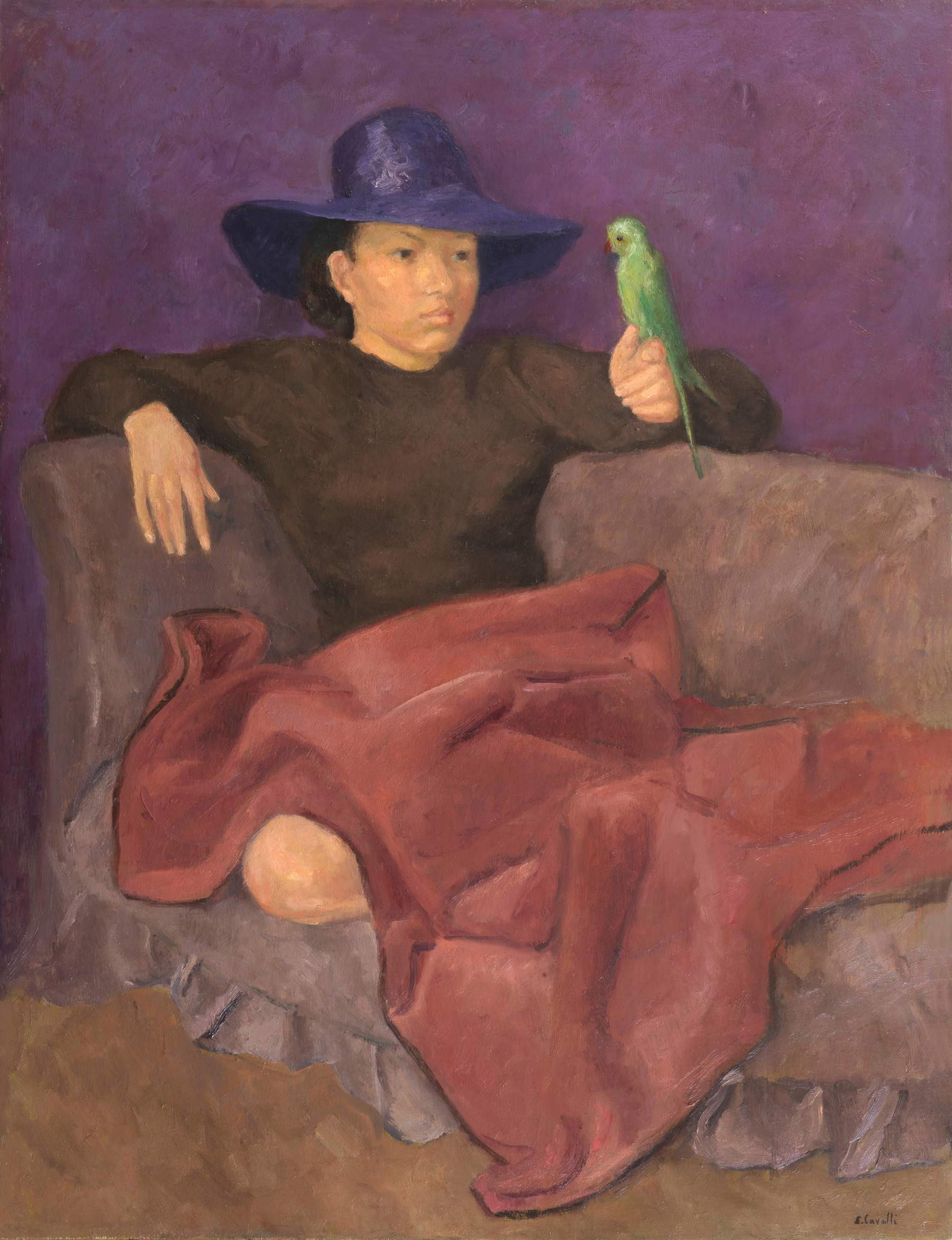
9. Luca Bertolo, Untitled 17#06. Proposed by: SpazioA. Price: 9,000 to 22,000 euros.
The booth of the Pistoia gallery SpazioA offers several works by Luca Bertolo (Milan, 1968), with prices ranging from 9,000 to 22,000 euros. Bertolo, among the leading contemporary Italian painters, is known for his stylistic versatility and deep reflection on pictorial genres. His style is characterized by a continuous exploration of the potential and limits of the painted image, ranging between figuration and abstraction, still life and landscape. This is demonstrated by these untitled landscapes, which take the form of reflections on the landscape itself and the way we see it, because the images of nature seem to be filtered through a glass on which drops and stains of paint are deposited. It is a research that Bertolo has been pursuing for a number of years.
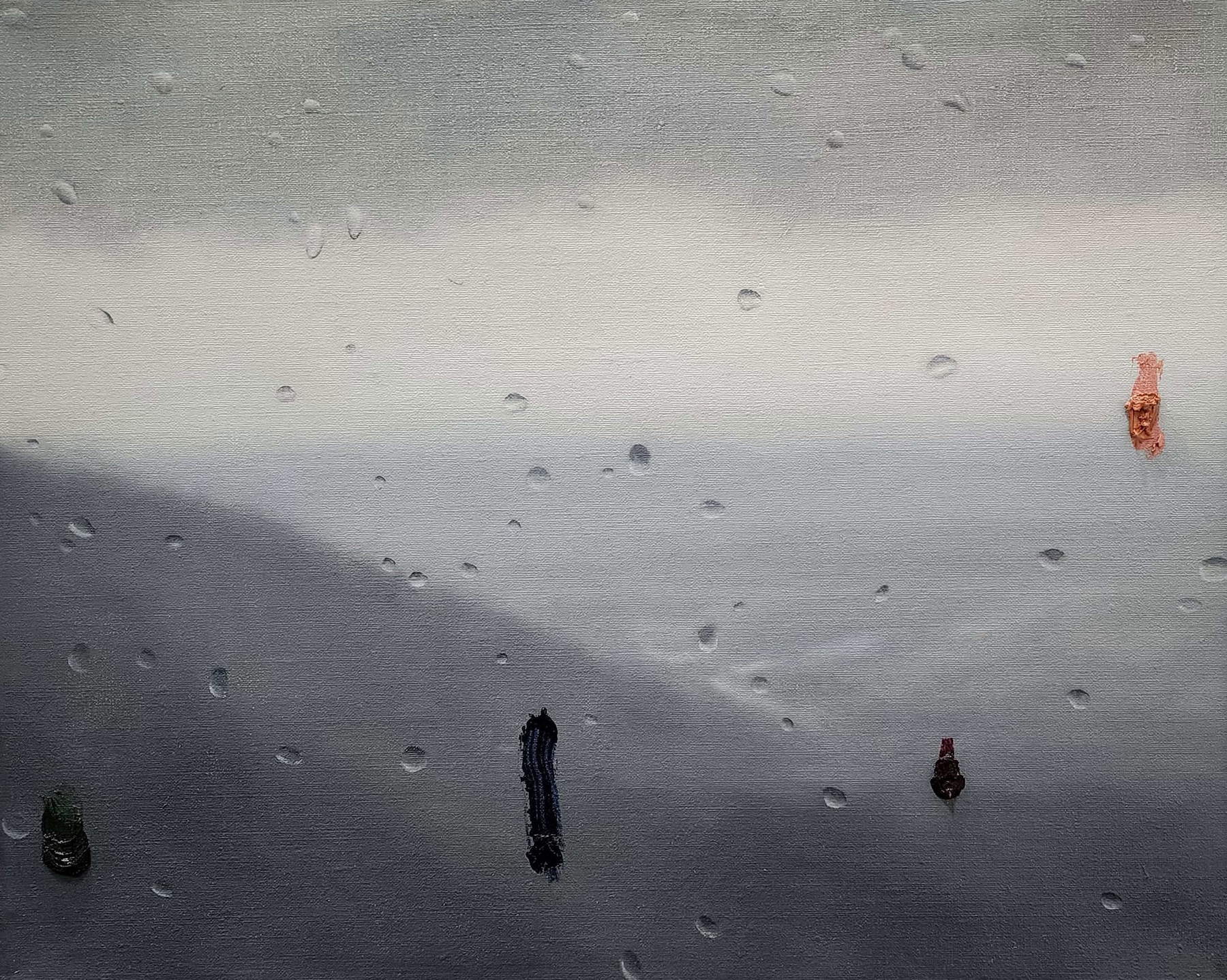
10. Aldo Fiozzi, Pissing Man. Proposed by: ED Gallery. Price: 20,000 euros.
Aldo Fiozzi (Mantua, 1894 - Milan, 1941) is one of the very rare Italian Dadaists: in 1921, together with Julius Evola and Gino Cantarelli, he participated in the first exhibition of the Italian Dada Group held at the Casa d’Arte Bragaglia in Rome. We can therefore say that Fiozzi has a very small company indeed. The work presented by ED Gallery, because of its anticlassical and irreverent subject matter, is a typical example of Dada poetics, which aimed to break all conventions. Fiozzi does not shy away from this intention: beyond the subject, even the geometric and angular forms, akin to those of the Cubists, were new to Italian art of the time. A true rarity. The last time the Italian public was able to see this work was in 2009 on the occasion of an exhibition dedicated to the relationship between Futurism and Dada held in Mantua, at the Casa del Mantegna.
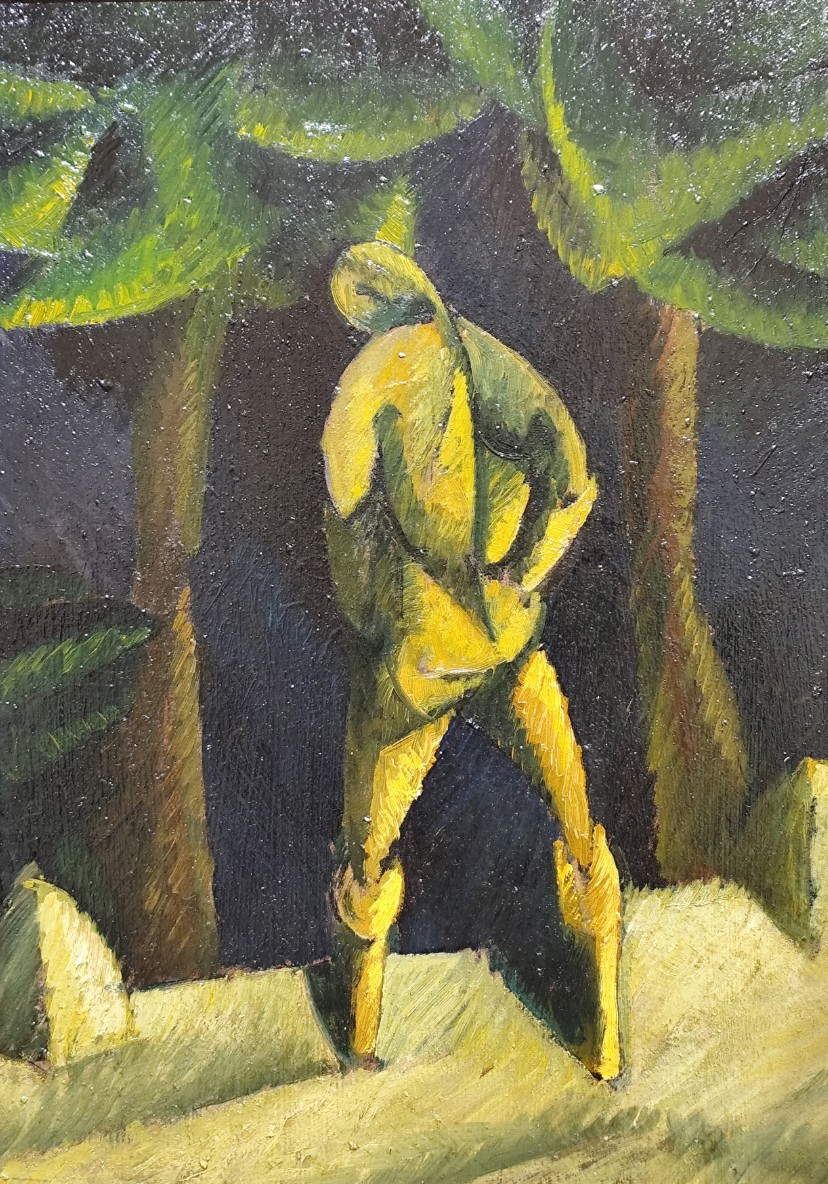
11. Carlo Prada, Self-Portrait. Proposed by: Aleandri. Price: 20,000 euros.
Carlo Prada (Milan, 1884 - Santa Margherita Ligure, 1960) is one of the lesser-known but no less interesting names in Italian pointillism. Born into a Milanese family, he chose an artistic career against his father’s wishes and enrolled at the Brera Academy in 1902. He made his debut in 1904, and in 1906 the dealer Alberto Grubicy noticed his talent and included him in his gallery. He participated in major exhibitions in Italy and abroad, including exhibitions in Paris in 1912 and 1921, developing a refined and personal pointillism. After World War I, in which he was a prisoner in Germany, his art underwent an evolution: in 1922 the Galleria Pesaro in Milan dedicated an exhibition to him that marked the end of his Divisionist phase. In the 1920s he approached the Novecento movement and, in the 1930s, Chiarismo. During World War II he took refuge in Santa Margherita Ligure, returning to Milan in 1946. He exhibited regularly at the Venice Biennale (1924-1948) and the Quadriennale in Rome (until 1960), receiving numerous prizes and awards. This self-portrait with a distinctly Nordic flavor, with the painter depicting himself with a bold perspective, over a snowy landscape and with singular realism, is a rarity in his production.
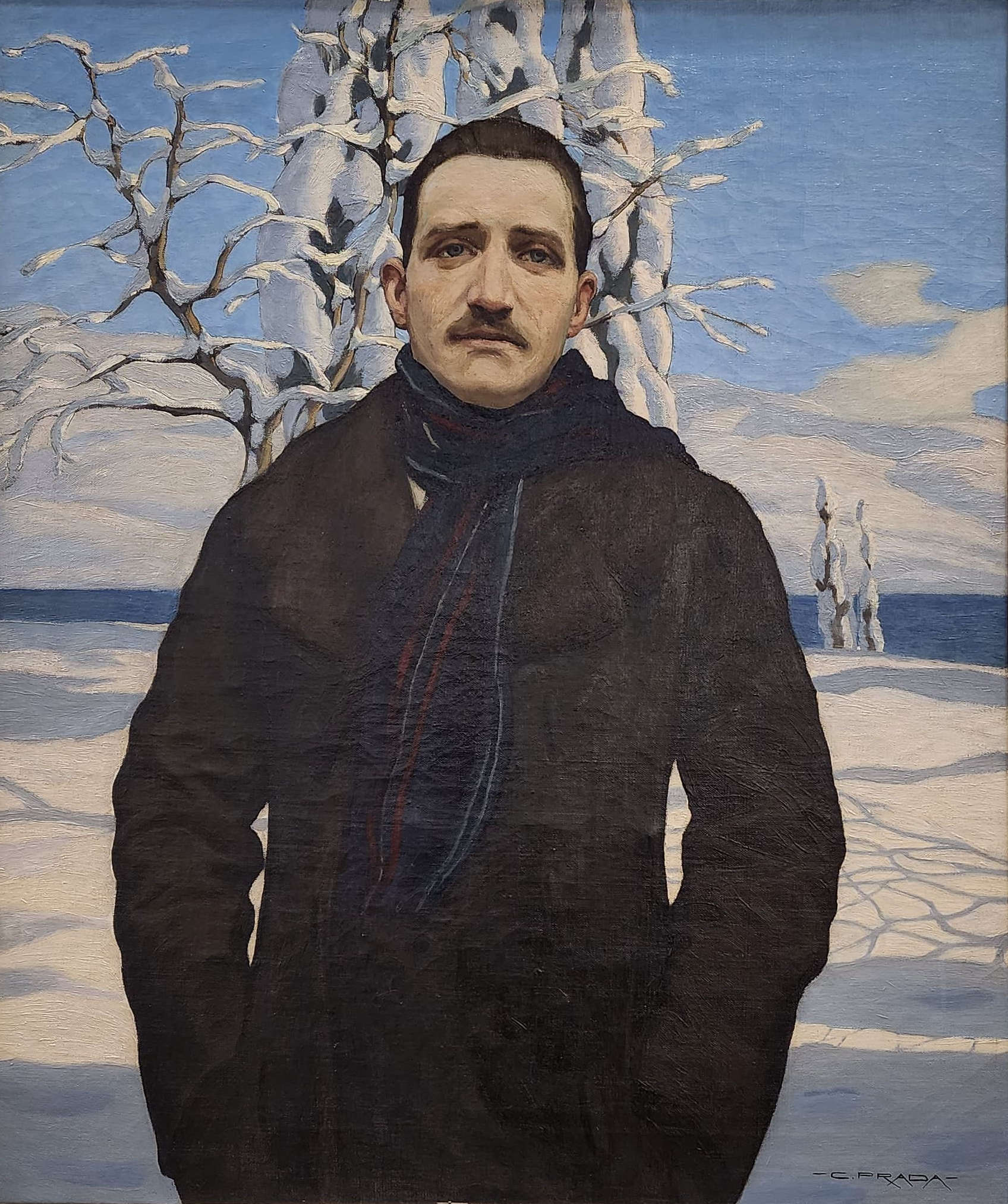
12. Romina Bassu, Transfert. Proposed by: Studio Sales. Price: 3,500 to 11,000 euros.
The indicated price refers to all the works by Romina Bassu (Rome, 1982) presented at the Studio Sales booth: in fact, the Roman artist is the only one exhibiting in the booth, which dominates the Portal section, Miart’s new experiment. Works of different sizes, all specially made for this occasion. The new works continue her artistic research that focuses mainly on the representation of female stereotypes, analyzing how patriarchal culture and consumer society have shaped the image of women. Through watercolors and acrylics on canvas, Bassu explores female figures inspired by period images, often lacking distinct features, transforming them into symbols of a collective and universal experience.
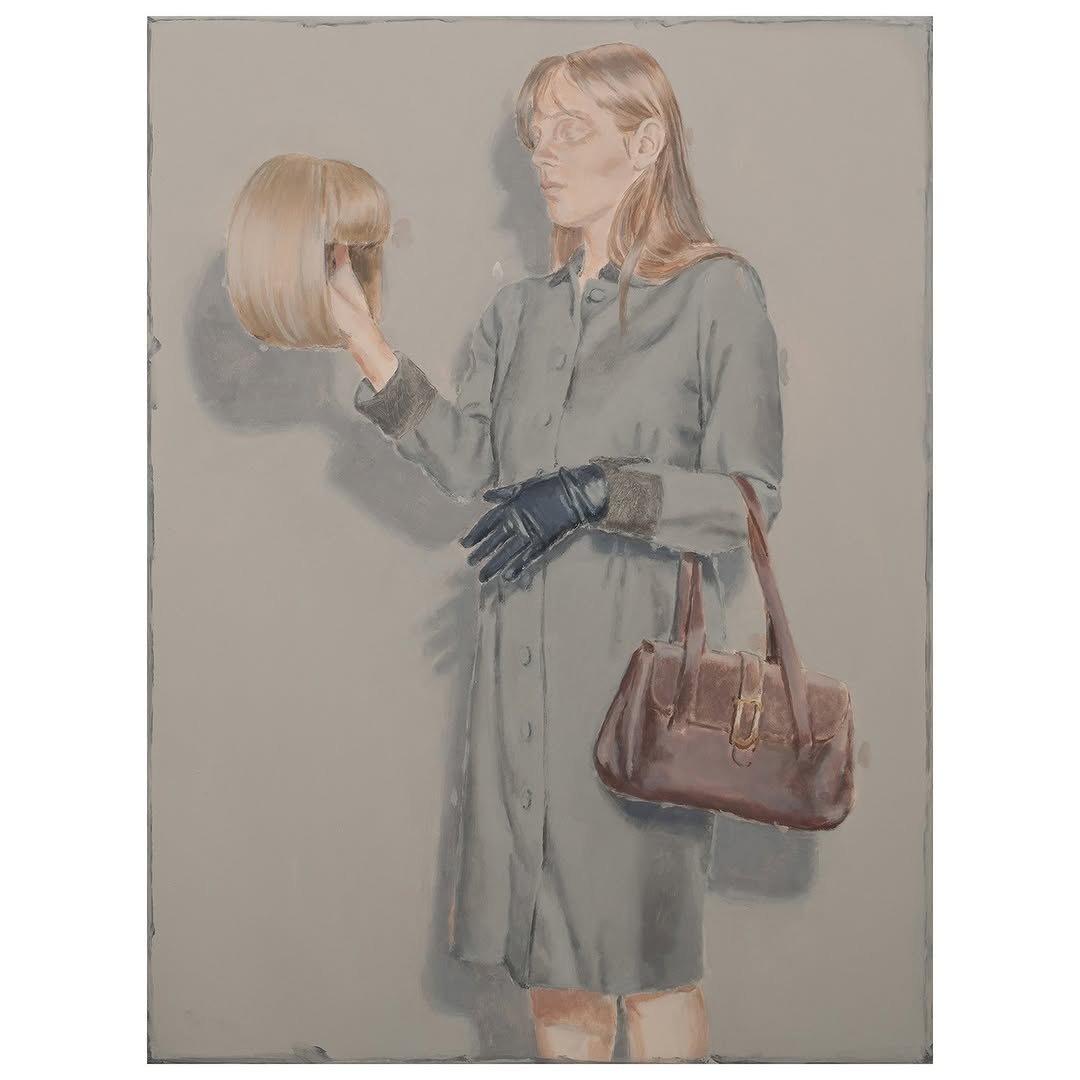
13. Francesca Banchelli, Bonfire. Proposed by: Vistamare. Prices: 2,000 to 10,000 euros.
Vistamare’s booth features four works by Francesca Banchelli (Montevarchi, 1981), with prices ranging from 2,000 euros for the smaller works to 10,000 euros for Bonfire, the largest of the Tuscan artist’s new works. Known for her paintings but also for her performances and exhibitions that blend these two expressive mediums in ways that are always surprising and unexpected, Banchelli stands out for her dreamlike expressionism that blends real and surreal elements. His works present encounters between human figures, animals and natural elements, creating visionary landscapes that defy temporal and spatial conventions. This fusion of reality and imagination invites the viewer to explore deep emotional and psychological dimensions.
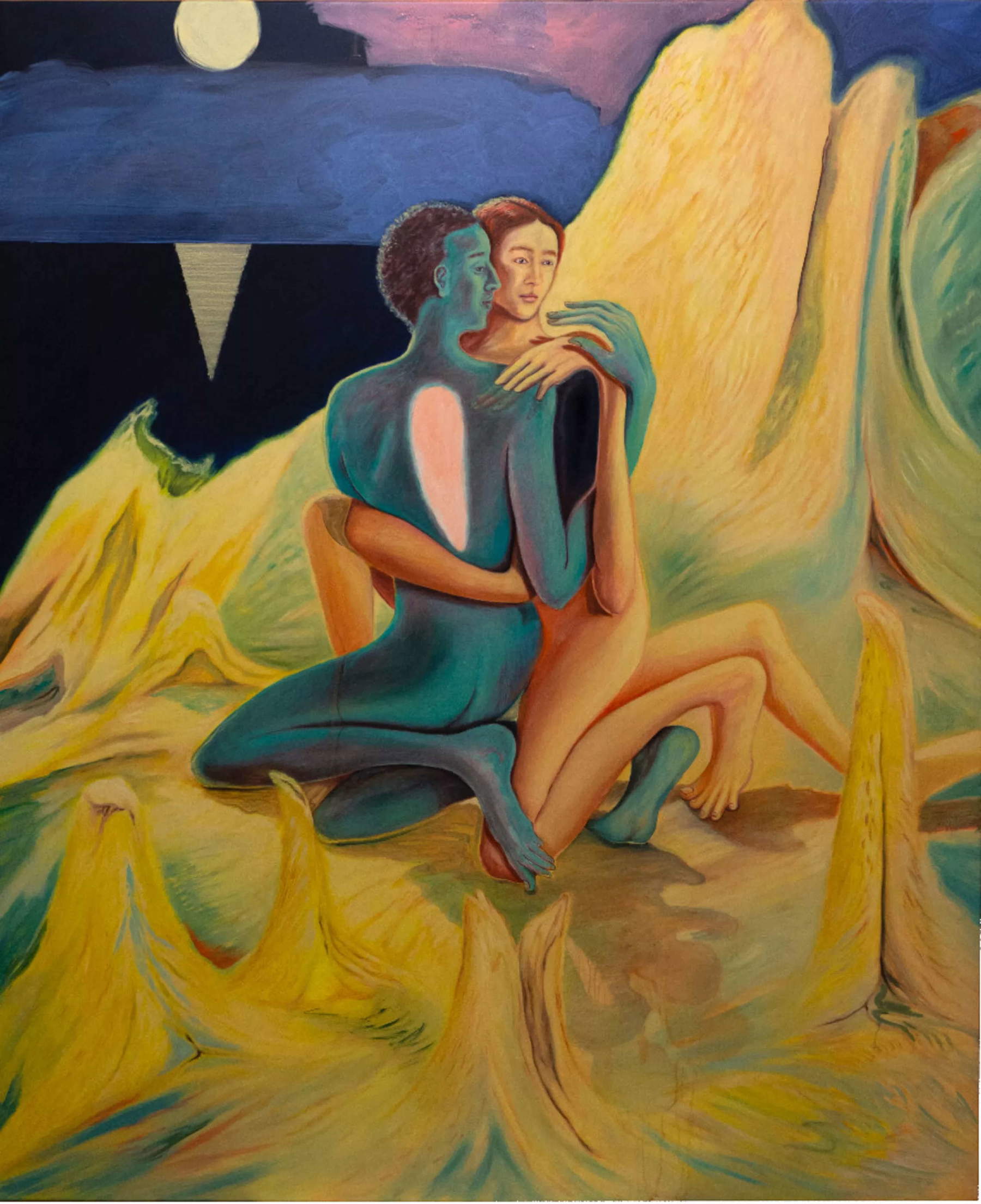
14. Cecilie Norgaard, Size matters 1. Request: 3,600 euros. Proposed by: Matteo Cantarella and Shahin Zarinbal
Cecilie Norgaard (Aarhus, 1991) fuses abstraction and figuration within paintings that employ traditional painting techniques and explore the implications between aesthetics, artistic production, and socioeconomic living conditions. In his practice, the Danish artist constructs a vocabulary of recurring signs and images. Norgaard approaches painting as a structural discipline, a system that reflects exclusively through itself. There is an ironic composure as, rather than thematizing his work, he questions the conditions of the medium and its semantic implications through his own conventional formats.
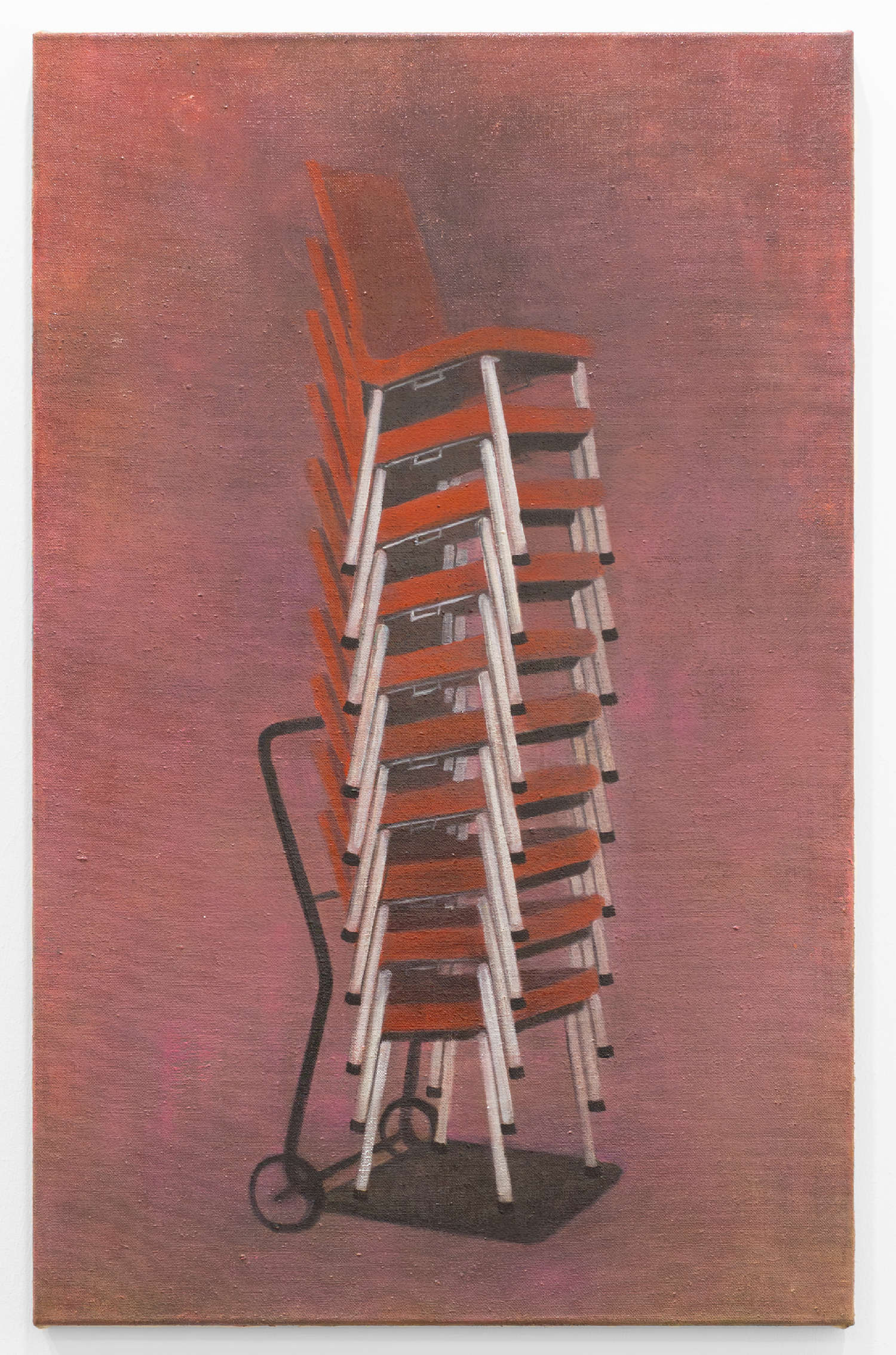
15. Edward Kay, Red Delicious. Proposed by: Roland Rosso. Price: 3,500 euros.
The booth of Roland Ross Gallery in Margate, UK, stands out in the Emergent section with works by Edward Kay (Chester, 1980), who brings to Milan a series of ten paintings of apples (they look identical, but they are ten different varieties of apples). Repetition, for Kay, is symbolic of a process in the making, since each iteration of his apple is not simply a copy but is something new that reconfigures the space of interpretation. For Kay, the painting exists as a discrete object, as part of a flow in which meaning is continually renegotiated through the interplay of differences. And again, the British artist wants to imply, through these fruits, that there is no single truth, but an open field of perception: the painting thus also becomes a critical tool, a means by which the artist manifests his engagement. For his apples, Kay was inspired by Renaissance painting but also by the seriality of much contemporary art.
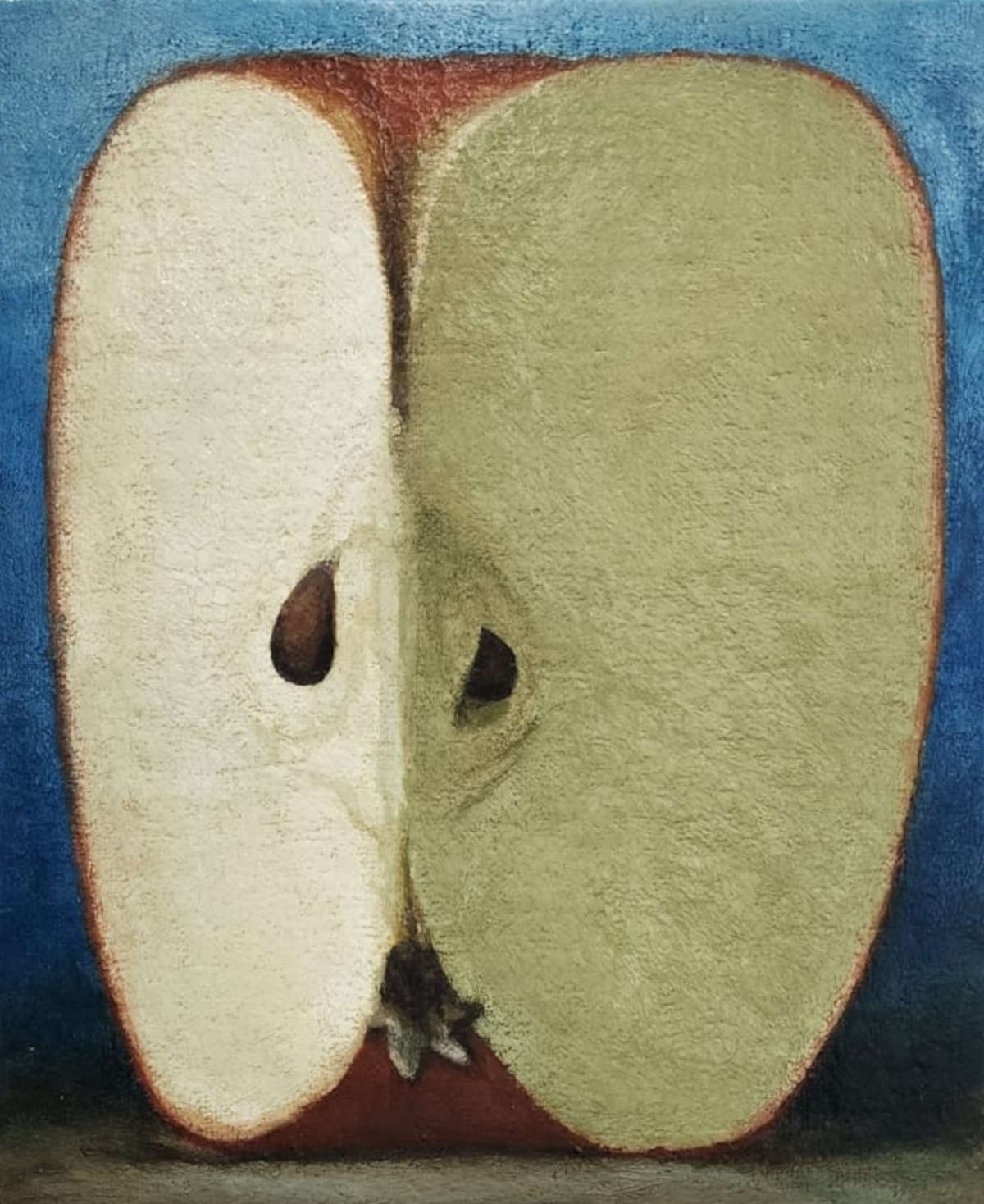
Warning: the translation into English of the original Italian article was created using automatic tools. We undertake to review all articles, but we do not guarantee the total absence of inaccuracies in the translation due to the program. You can find the original by clicking on the ITA button. If you find any mistake,please contact us.





